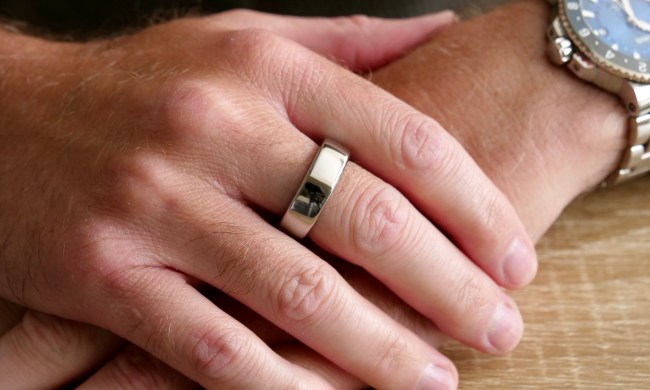
Android 10 has been released, but as it’s still early, only a few devices have been updated to Android’s latest version. As such, it will be a while before Google releases numbers about Android 10’s penetration into the market. But we can still take a look at how well Android’s last major update, Android 9.0 Pie, has been doing. According to numbers from May of 2019, Google is still struggling to update existing devices to its latest operating systems, with the adoption of Pie at a measly 10.4%.
As was true back in October 2018, Android Oreo is still the most common version of Android on devices, with versions 8.0 and 8.1 amounting to a combined 28.3% of all active Android devices. That’s a massive 9.1% increase since October 2018. Android Nougat comes in second place, with 7.0 and 7.1 representing 19.2% of all active Android devices. In fact, if placed into a hierarchical list, Android 9.0 Pie comes in at an embarrassing fifth place, behind 2014’s Android Lollipop (14.5%) and 2015’s Android Marshmallow (16.9%).
It’s important to keep in mind, that Google’s survey doesn’t account for the millions of Android smartphones in China, as the search giant only collects data from devices that access the Google Play Store, which is not available in China. It’s also worth keeping in mind these numbers are from May, and adoption could have swelled over the months since. But even with that in mind, it’s an embarrassing result for Android Pie, which would have been 9 months old at the time the data was gathered. By comparison, Apple’s iOS 12 was present on a massive 88% of active iOS devices in less than a year.
Version |
Code name |
API |
Distribution* |
| 2.3.3-2.3.7 | Gingerbread | 10 | 0.3% |
| 4.0.3-4.0.4 | Ice Cream Sandwich | 15 | 0.3% |
| 4.1.x | Jelly Bean | 16 | 1.2% |
| 4.2.x | 17 | 1.5% | |
| 4.3 | 18 | 0.5% | |
| 4.4 | KitKat | 19 | 6.9% |
| 5.0 | Lollipop | 21 | 3.0% |
| 5.1 | 22 | 11.5% | |
| 6.0 | Marshmallow | 23 | 16.9% |
| 7.0 | Nougat | 24 | 11.4% |
| 7.1 | 25 | 7.8% | |
| 8.0 | Oreo | 26 | 12.9% |
| 8.1 | 27 | 15.4% | |
| 9.0 | Pie | 28 | 10.4% |
*The data above is from Google. It was collected during a seven-day period ending on May 7, 2019. Any versions with less than 0.1% distribution are not shown.
So why does Google struggle to update devices when compared to Apple? Simply put, fragmentation and control. While iOS and iOS devices are controlled exclusively by Apple, most Android devices are outside of Google’s control. As such, Google itself does not control when third-party manufacturers update their Android devices. This notoriously bad fragmentation was the catalyst for Project Treble, a system-level change in Android Oreo that bypassed much of the testing currently required by manufacturers, chipmakers, and carriers. But it doesn’t directly affect how quickly manufacturers can modify their manufacturer skins, and isn’t backward-compatible — so older Android devices will remain stuck on the old upgrade cycle.
What does this mean for Android 10? In all likelihood, while some manufacturers (like Nokia, Essential, and OnePlus) have begun to pride themselves on their update speed, they comprise a fairly small amount of the overall Android market. With Samsung and Huawei shipping the most Android phones in any given year, those manufacturers’ update speed will be critical to Android 10 adoption. Unfortunately, neither of those two are among the fastest updaters.
It’s also worth keeping in mind that most Android devices top out at two major updates, with some not even receiving that. Therefore, anyone holding onto a phone that’s around or almost two years old is probably using a phone that won’t be updated — leading to the chunky figures for Androids Oreo, Marshmallow, and Nougat. However, it is worth noting that numbers for Android’s KitKat through to Nougat have declined, likely meaning that people are upgrading their older phones for newer ones with fresher Android versions.
There’s one final point to make before we end this post though, and it’s the oddly static number of phones still using Android Gingerbread and Ice Cream Sandwich. Both of those Android versions have stayed static at 0.3% of the market, and it’s unlikely anyone is still selling phones from 2010 and 2011 respectively. It can only mean some people are still holding on to some truly ancient phones. Good on them for getting their money’s worth, but if that describes you, it might be worth considering upgrading your daily driver and putting old faithful to a new use.
We will continue to update this post as Google updates its Android distribution figures.
Updated on September 6, 2019: Added the latest Android distribution statistics.

